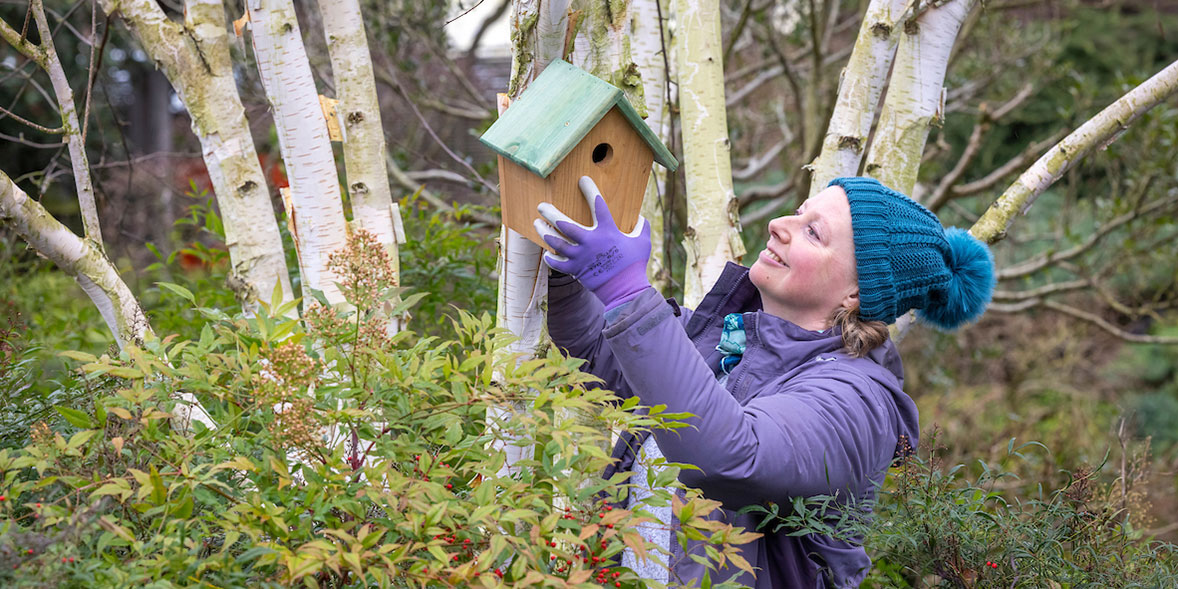
Make your garden better than ever
Our product tests & advice help you get the garden you want. Subscribe to Which? Gardening for only £4.99 a month or £49 a year.
Get monthly expert adviceCancel anytime
By clicking a retailer link you consent to third-party cookies that track your onward journey. This enables W? to receive an affiliate commission if you make a purchase, which supports our mission to be the UK's consumer champion.

It may still be chilly outdoors but there's plenty to do to get ready for the spring ahead. It's a good time to stock up on things you'll need for sowing seeds, such as pots and labels.

Make sure that you site your box out of the prevailing wind and strong sunlight. It should be about 1-3m above the ground, ideally on a tree trunk, but a wall or shed is fine, too.
Look for somewhere that is hard for cats or squirrels to reach and be sure to position it away from bird tables and feeders, as they're busy areas.
Try one of the best bird nest boxes from our expert tests
Prepare for sowing seeds and potting up plug plants with a Best Buy fresh compost. Buy fresh, as compost deteriorates in the bag overtime and gives a poor performance. Check that the packaging isn’t faded and the bag doesn’t feel heavy or waterlogged. Store in a shed or garage so it doesn’t get wet.
Learn about why peat-free compost is important
Before the greenhouse begins to fill up with plants, take the opportunity to tidy up any pots and trays, and scrub the staging. Finish off by cleaning the glass inside and out as it will increase the light levels for your plants, which is especially important early in the year when they’re naturally low.
Avoid grey mould (botrytis) killing plants that you’re overwintering in the greenhouse or coldframe by checking them over regularly to remove dying leaves and flowers. These can go in the compost heap afterwards.
Find out how to buy the best greenhouse
Add organic matter to improve your soil by simply spreading it on the surface in a layer roughly 3-5cm deep. Spent mushroom compost, well-rotted manure and garden compost all are ideal.
Our expert tests reveal the best and worst compost bins
Freshen up your lawn edges by recutting them with a half-moon tool or a spade. Use a taut string line as a guide for straight edges or a hose for curved edges. Your garden will look instantly neater. You can then maintain the edge by trimming with long-handled shears or a grass trimmer every time you mow.
Find out how to buy the best grass trimmer
The composting process naturally slows down during the colder winter weather. To help give it a boost, stir your compost heap with an aerator tool or dig it out and refill it. This will reduce compaction and speed up rotting.
Learn how to make compost
Left in a dark cupboard, seed potatoes would grow long shoots that snap off easily when planting in March. To avoid this happening, ‘chit’ the potatoes by putting them in a tray and leaving them in a light, frost-free place.
Discover how to grow potatoes and the best varieties
Mid-February is the start of the veg-sowing season, but don’t sow everything at once. It’s still early in the season, so begin with hardy veg such as spring onions, beetroot, lettuce and spinach. Sow in module trays indoors and plant outside when they’re big enough to handle.
Learn more about the easiest vegetables to grow, and discover the best compost for sowing seeds
Get your garlic in the ground before the end of February.
Break the bulbs into the individual cloves and plant pointed-end up, so that the tip is just covered in soil. Space them 15cm apart in rows that are 30cm apart in a sunny spot, preferably with well-drained soil.
Discover the best garlic varieties

Our product tests & advice help you get the garden you want. Subscribe to Which? Gardening for only £4.99 a month or £49 a year.
Get monthly expert adviceCancel anytime

After looking good all winter, the biscuit-coloured stems of deciduous ornamental grasses, such as miscanthus, will begin to get untidy. Using secateurs, cut them back to ground level, being careful not to damage any new, green growth that's sprouting at the base.
If you've got a lot of plants you can save time by slicing the stems with a hedge trimmer into 5-8cm pieces which can be left on the ground to rot down.
You can give plants a boost by feeding them and mulching around them.
Learn about the best ornamental grasses and how to grow them
Some tender plants, such as pelargoniums and begonias, need a long growing season, so it's good to start them off from seed early in the year. Check the back of the seed packet and sow when recommended as others can be left as late as April or even May.
Make sure you always use our Best Buy composts for sowing seeds as they make a huge difference in terms of the results you'll get.